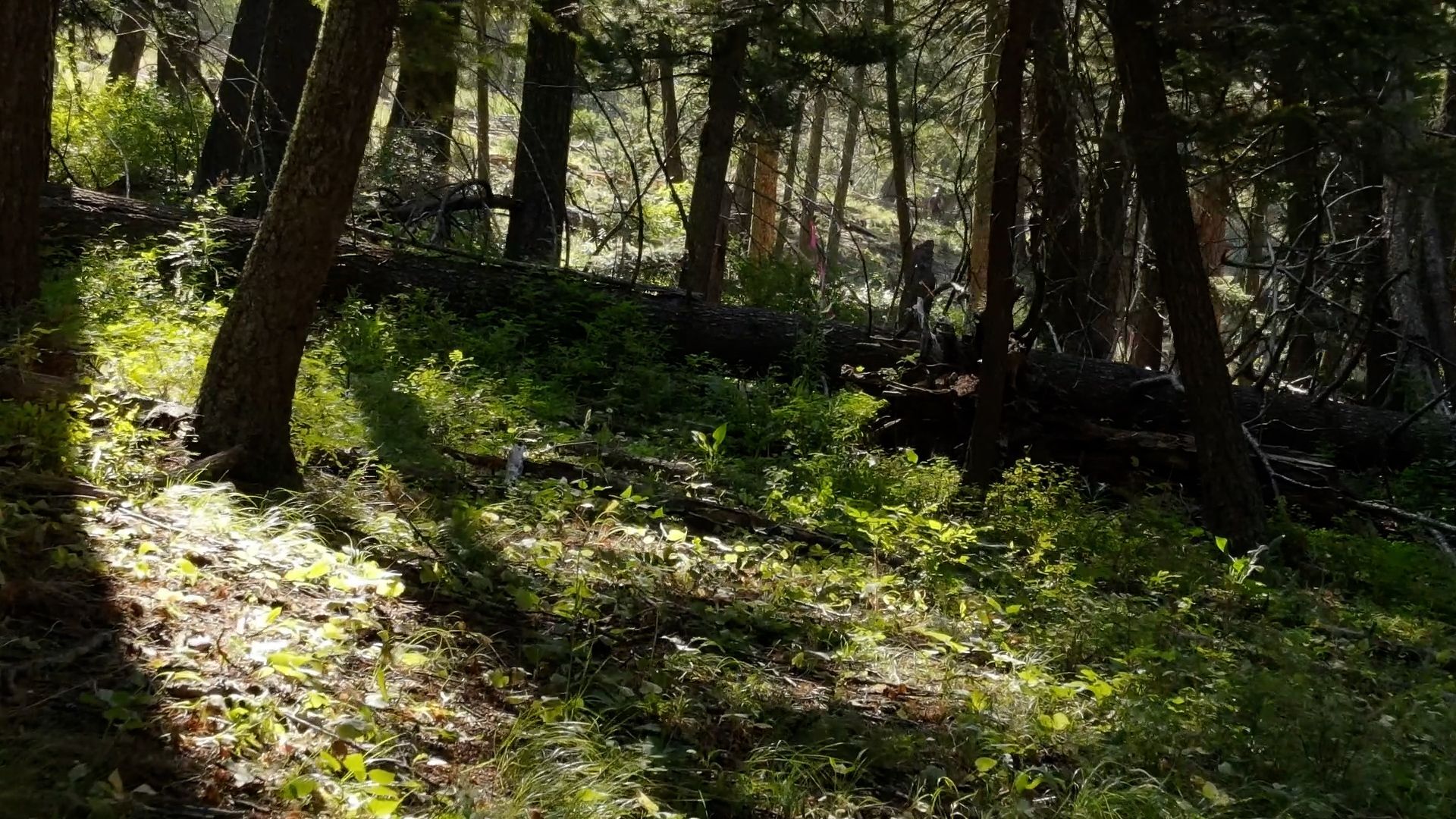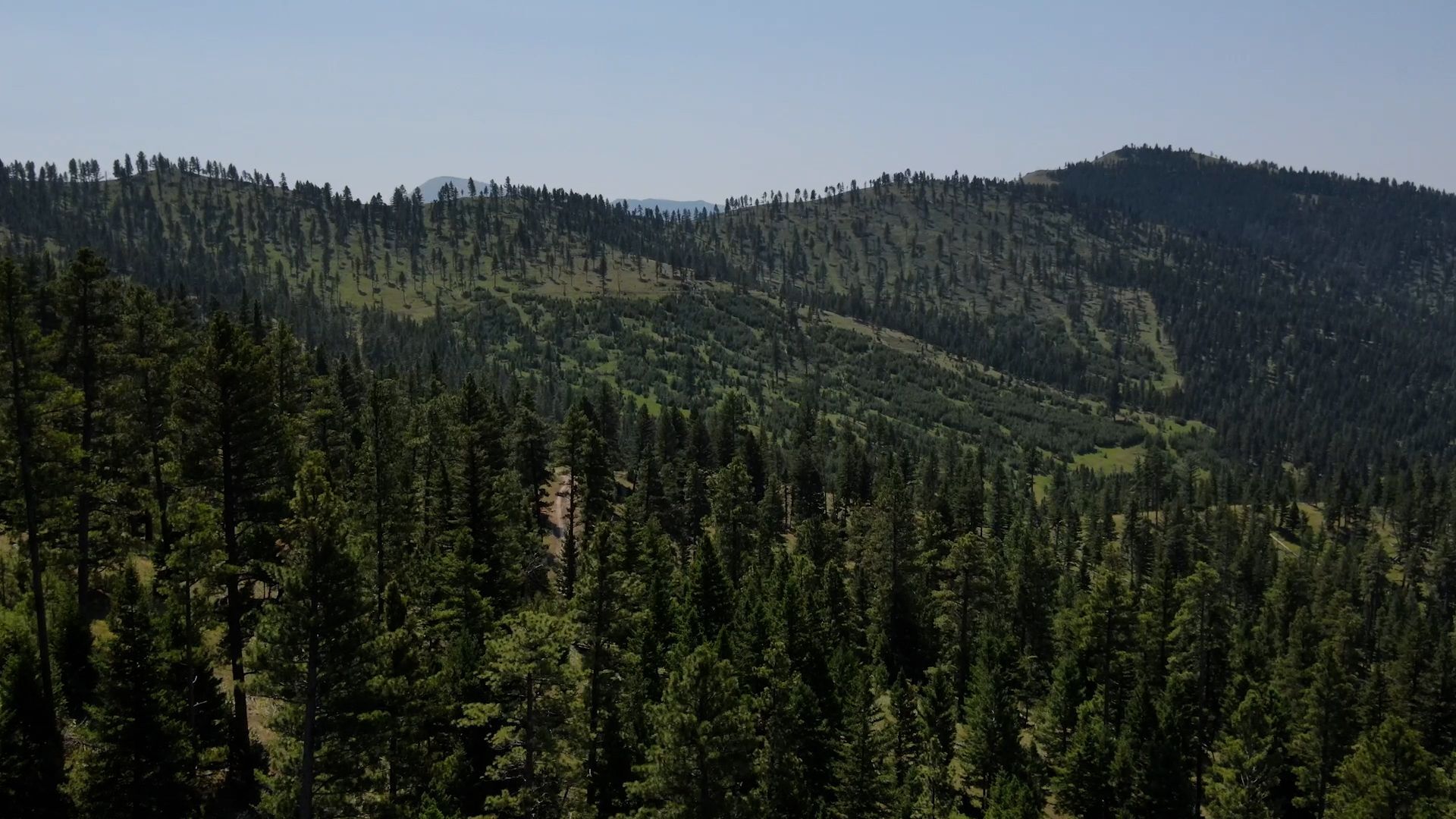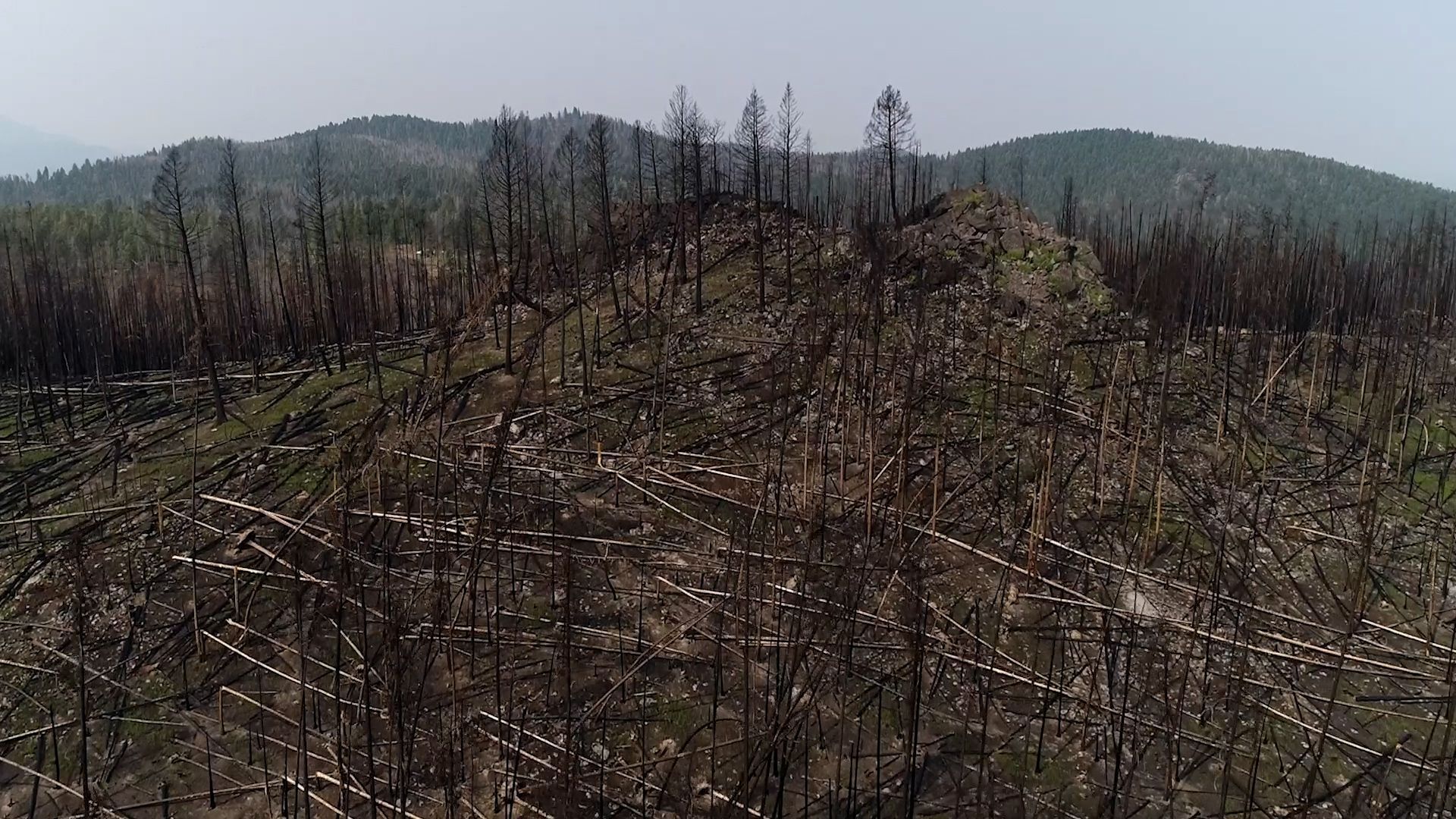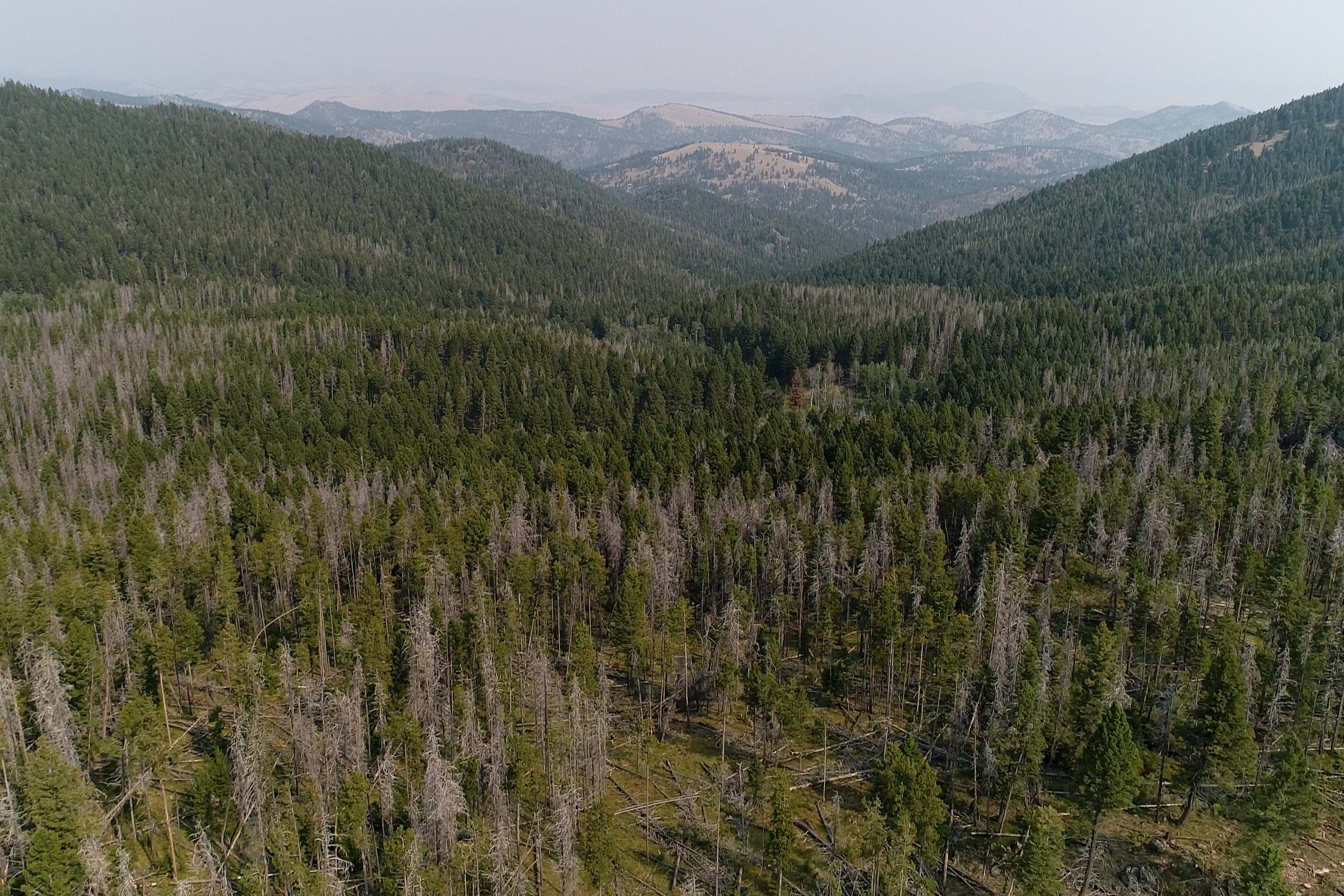
What is a healthy forest? The phrase “healthy forest” is used so often in literature surrounding forest management decisions, that this may seem like a simple question. However, a strong, scientific definition is merely glossed over, leaving the general public to assume their own meaning. Additionally, people tend to have a very stagnant view of forests, either not knowing or forgetting about the cyclical nature of forest growth patterns. Realistically, forests aren’t always going to look “healthy,” and healthy stands don’t always appear the same. This reality, coupled with the lack of a concrete definition, leads to polarizing and simplifying concepts that often refer to either managed or unmanaged forests.
In reality, healthy forests can be managed or unmanaged. A healthy forest can be treated specifically to prevent catastrophic wildfires, or it can be an unmanaged wilderness area that we know one day will burn. The definition of healthy forests must account for a multitude of variances, which is why it can be so tricky to thoroughly define. At Marks Lumber, we believe in doing our part to help create healthy forests. To us, healthy forests share four specific characteristics: vegetation diversity, habitat and wildlife diversity, healthy growth, and resilience to catastrophic wildfires. Here’s how each of these characteristics contributes to a healthy forest.

Vegetation Diversity
While trees tend to be the dominant species in forests, a healthy forest constitutes a wide array of tree species, grasses, forbs, and shrubs. Vegetation diversity plays a significant role in ensuring balance in the ecosystem. In “Forest Health from Different Perspectives,” T.E. Kolb describes this balance as maintaining the “supply and demand of essential resources,” such as light, water, nutrients, and growing space. Ecosystem diversity preserves this supply and demand, reducing stress and increasing resilience to things like insect infestations, disease, and natural disasters.
Silviculture techniques such as thinning and prescribed burns help support vegetation diversity, thereby balancing the “supply and demand” of the forest. John Ottman of Ottman Forestry Consultants describes the essential nature of treating to support and create diversity:
“You need a mosaic of grasses, forbs, and shrubs. The more mosaics you have, the healthier the stand,” Ottman explains.
The key to creating mosaics is ensuring enough space for the subordinate species to survive. Often, high-density forests struggle to maintain high levels of diversity due to the more dominant species taking over the light, water, and growing spaces needed for other species to survive.

Habitat and Wildlife Diversity
Vegetation diversity also provides habitat for many different types of wildlife. According to the U.S. Forest Service, “National forests and grasslands provide: 80 percent of the elk, mountain goat, and bighorn sheep habitat in the lower 48 states; 12 million acres of waterfowl habitat; 28 million acres of wild turkey habitat; and habitat for 250 species of neotropical migratory birds.” Maintaining habitat diversity, then, is one of the largest factors foresters and landowners need to consider when treating to create a mosaic of healthy stands. While wildfires can temporarily displace wildlife and alter the state of forest habitat, foresters can adjust silviculture techniques to minimize disturbance and foster a more diverse, resilient wildlife habitat.
“It’s the tree you’re leaving, it’s not the tree you’re cutting,” Ottman says. This is especially true when it comes to wildlife considerations. Over the years, foresters have learned that downed timber and standing dead timber make excellent habitats for small mammals, insects, and birds. With that in mind, foresters have changed procedures to now leave some of these unsightly snags to support habitat and wildlife diversity. These practices have evolved foresters and land managers' understanding of what a healthy forest truly looks like, in that they may not always be green. Instead, these stands will be made into diverse mosaics that include ample habitat for many species.

Healthy Growth
A healthy forest also needs to exhibit long-term sustainable growth. Stagnant forests may signal an imbalance in the supply and demand of the forest, including soil, water and air, and may require treatment to restore the balance in the ecosystem.
Sustainable growth is an essential part of forest health, as we need our forests to continue to sequester carbon, provide timber products and recreational opportunities, and maintain wildlife diversity. Previously, natural disasters such as forest fires were the primary way forests maintained themselves, promoting regular, healthy growth. However, decades of fire suppression have disrupted the cycle of these small, maintaining fires, setting us up for large-scale forest fires which destroy hundreds of thousands, or even millions of acres at a time. Without the small ground fires, many forests are now so overgrown that they have become stagnant due to a lack of resources, creating risk for catastrophic wildfire.

Resilience to Catastrophic Wildfire
Resilience is often brought up in conversations about forest health, referring to the ability of forests to withstand disturbance. In order for forests to last, they must be able to survive natural habitat variances, such as catastrophic wildfires. Overgrown and unmanaged forests tend to have a lower survival rate, as more ground fuel creates hotter fires that can quickly move up into the crown of trees. Once in the crowns, unmanaged forests provide extensive fuels for those fires to take off and turn into catastrophic natural disasters. Thinned, diverse forests tend to have a better chance of survival due to less ground fuel and more spacing between the crowns, which help keep fires on the ground where they remain less destructive.
While we have become so conditioned to view fire as the enemy, the truth is that preventing all forest fires does not create healthy forests. Decades of fire suppression have taught forest managers otherwise. Therefore, it is important to remember that some land needs to be left untreated, and sometimes we need to let fires burn.
“What we are really trying to avoid is high-severity wildfires,” says Gary Ellingson, a forester with the Montana Department of Natural Resources and Conservation. “With low severity or an intermediate severity [...] The fire will burn, but you will still have an organic layer of material in the soil that will allow water to infiltrate. When you have a high severity fire, there’s nothing left but mineral soil and when you get thunderstorms and rain events on that, it just washes off the hillside. You lose the soil, and that impacts long-term productivity. If you lose that, it’s gone for many generations.”
Our goal is not to avoid all wildfires but to make it so that our forests can survive these small, productive fires that are beneficial to maintaining diverse, healthy forests.

Healthy Forests and the Timber Products Industry
There is no one specific path to obtaining a healthy forest. Forests require regular maintenance, and techniques such as thinning, prescribed burns, and forest fires are some of the most effective ways to promote biodiversity and wildlife diversity. This, in turn, ensures healthy forest growth, and boosts resilience to catastrophic wildfires.
Marks Lumber and the entire forest products industry play an essential role in maintaining forest health. Without the capacity that our mills provide, we would not have the economic support to continue to help treat our forests.
